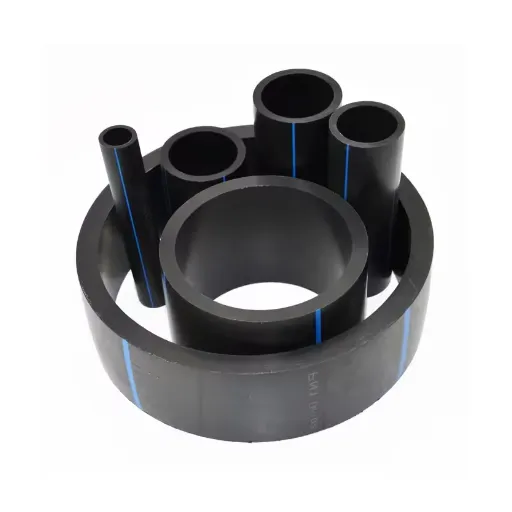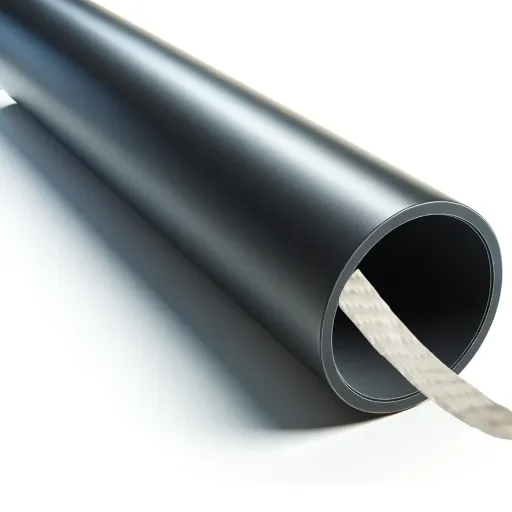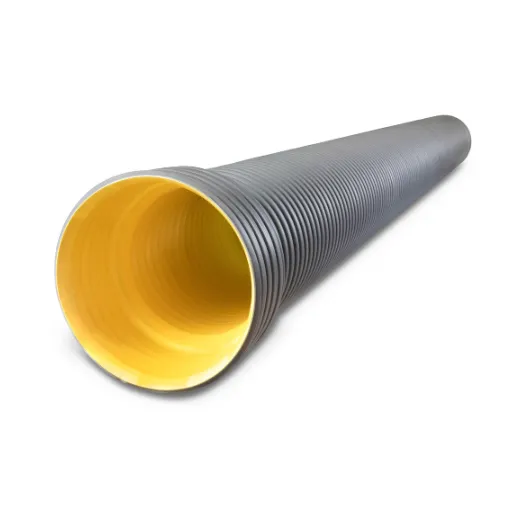High-density polyethylene (HDPE) pipes have become a staple in modern construction and infrastructure projects due to their durability, flexibility, and cost-effectiveness. However, their performance and longevity are heavily influenced by the surrounding conditions, particularly the cover heights at which they are installed. Understanding the maximum and minimum cover heights is a critical aspect of ensuring the structural integrity and operational efficiency of these pipes. This article dives deep into the technical guidelines, industry standards, and practical considerations for determining appropriate cover heights. Whether you’re an engineer, contractor, or project manager, this guide will equip you with the knowledge to make informed decisions and optimize the use of HDPE pipes in diverse applications.
What Are the Minimum Cover Requirements for HDPE Pipes?

Importance of Minimum Cover in Pipe Installation
The minimum cover for HDPE pipes is one of the most important design features when it comes to the pipe’s design due to structural failure and overall performance considering different load scenarios. If the cover depth is not appropriate, the pipe will be subjected to surface loads like vehicular traffic, overexerting equipment, and other environmental forces that will put the pipe’s performance at risk.
For pipes placed under roadways, adequate cover is needed to uniformly distribute the load without causing over-concentration stresses to the pipe. Set standards suggest a minimum cover of 12 inches (300 mm) for non-traffic regions of the road to up to 24 inches (600 mm) for moderate to heavily loaded vehicles. Over time, these numbers may change due to local laws or a specific contractor’s needs. Furthermore, the type and amount and amount of soil compaction greatly impact the cover design. Poorly compacted soil or gravel will tremendously lose load-bearing capacity, endangering the pipe’s functionality.
Not following the minimum cover requirements can lead to joint separation, deformation, or damage to the pipe from external forces. That said, these requirements, one of them being the industry standards and the project-specific engineering analysis, need to be followed for ensuring the long-lasting reliability and functionality of HDPE pipe systems.
Factors Influencing Minimum Burial Depth
Some of the very critical elements that need to be considered for determining the minimum burial depth for HDPE pipes include the soil composition, traffic loads, installation practices like the setting and backfilling techniques, as well as the environmental features that surround the installation site. Arrangement and amount of soil also have a direct impact on the load that can be placed on the pipe without bending or breaking it. Soils like clays, which are cohesive, offer much better resistance to external forces than non-cohesive sands or gravels, which tend to need extra compaction or stabilization to provide sufficient support.
In terms of traffic load, care needs to be taken involving road vehicles and construction machinery. Any construction provided needs to factor in dynamic and static loads from above that the buried pipe would be receiving through the surface. It has been documented that areas with high load-bearing capacity with insufficient cover thickness tend to deflect or collapse, and precise engineering calculations need to be put in place to avoid this.
In terms of extreme environmental features, factors like freeze-thaw cycles, changes in groundwater level, and seismic activity tend to place additional stresses on the installation, and a shift in installed depth is needed to ensure it is stable.
Also, installation strategies alongside material choice and compaction methods tend to influence a project’s effectiveness. Poor digging methods lie causing trenches to be too deep along with insufficient force application during backfilling can lead to uneven opportunity across the pipe allowing for force to be concentrated on a single area.
Role of Backfill Material in Achieving Minimum Cover
Using the correct backfill material is essential in achieving the minimum cover for buried structures and ensuring it is preserved over time. Proper backfill material must help in evenly distributing the imposed loads as well as contribute to the overall stability of the pipe or structure being used. Depending on the soil’s conditions at a site, cohesive and non-cohesive materials such as granular soils, crushed stone, or controlled low-strength material (CLSM) may be used.
Well-graded granular backfill material provides better support in both vertical and lateral directions, and improves the overall compaction of the structure by reducing voids and lessening uneven compaction. These features prevent inadequately compacted backfills from compromising the load resistance, which could lead to settlement or structural failure.
Moreover, the backfill material needs to be compatible with the pipe’s stiffness class and factors like freeze-thaw cycling or groundwater exposure might affect the long-term performance of the installation as well. An extensive geotechnical study followed by a field investigation is necessary including Proctor testing and nuclear densitometry to ensure that these standards of compaction have been achieved per project design specifications. Such an approach will preserve the structure’s strength and reliability while satisfying relevant regulations, protecting the structural integrity throughout its operational lifespan.
How to Determine Maximum Cover Heights for HDPE Pipes?
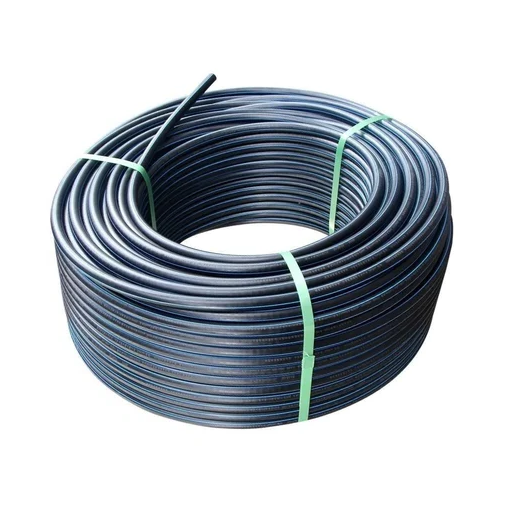
Understanding General Maximum Cover Limits
Several critical factors are considered for determining maximum cover heights, including the pipe wall profile, material strength, cover depth, surrounding soil conditions, and their effects on the HDPE pipes. Pipes with lower SDR ratios typically exhibit greater structural rigidity, which allows them to endure increased cover heights. Also, soil loads from overburden materials and traffic need to be examined to ensure appropriate service conditions do not overwhelm the structure.
Soil composition, traffic activity, and live loads change the configuration of cover boundaries, which also dictate choose maximum cover capability of HDPE pipes. Localized stresses and under compaction change consolidated filler materials, which distribute uniformly around to provide SDG-level support. With precise adherence to the manufacturer’s specifications, most design standards mark the limit of cover height from 10 feet(3m) to 30 feet (9m), depending on the pipe class and installation scenario.
The use of finite element modeling and real-life case studies alongside strong testing protocols allow engineering professionals to reliably predict HDPE performance regarding defined site conditions. This advanced technique mitigates s risk of failure while maximizing the effectiveness of buried infrastructure solutions.
Impact of Pipe Diameter on Maximum Cover
The size of a high-density polyethylene (HDPE) pipe affects its maximum cover height due to structural and material interactions. Larger pipes suffer greater stress and strain under comparable cover heights than smaller pipes. This is due to larger diameters having greater moments of inertia for external loads, which directly impact the distribution of external loads.
For instance, an 18-inch (450 mm) diameter HDPE pipe is capable of covering a height of 20 feet (6m) provided there is appropriate backfill material, compaction, and soil type. In comparison, a 36-inch (900 mm) diameter HDPE pipe may need to reduce cover height to increase safety factors unless some reinforced installation techniques are used.
Recent innovations in finite element analysis (FEA) modeling techniques enable engineers to assess behavior under differing load conditions so site-specific solutions can be implemented. These solutions can include controlled backfill zones, geotextile reinforcement, and even varying the wall thicknesses to enhance performance. Aligning a pipe’s diameter and installation alongside the chosen material appropriately results in greater durability and safety at deeper depths and increased safety.
How Does Installation Affect HDPE Pipe Cover Requirements?
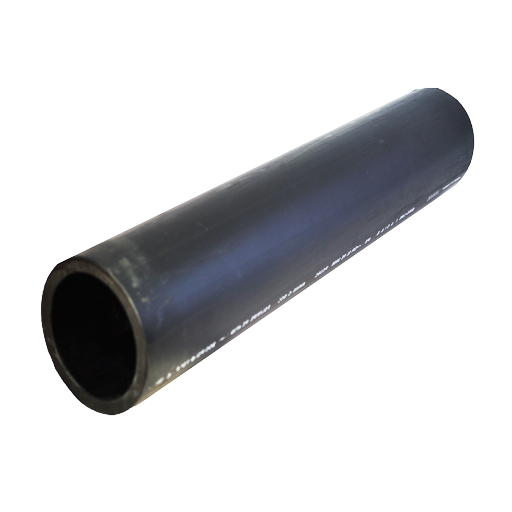
Standard Installation Procedures for HDPE
An important determinant of a pipeline system’s operational efficiency and durability is the correct installation of HDPE pipes. The process commences once the trench has been dug with the correct width, as this will allow the pipe diameter, bedding material, and backfill material that prevent deformation from enduring stress under load.
Like all other materials used for Mounted crystal frame HDPE pipes, the granular material that has been graded and compacted serves as bedding while also giving hundreds of pristine steras the pipe guidance support. Mounting and Disassembling without any PZ5 load distributing interfaces requires specific grooves that are more termed as grates. These grates aid in prevention against cric as well as additional fractures.
Backfilling activities must begin in a particular order, usually compacted in 6 to 12 inch lifts, to attain the desired density or strength without damaging the pipe. The backfill material also affects the performance of the pipe; however, non-cohesive soils containing sufficient compaction properties are usually preferred.
In conclusion, observing ground settlement and pipe alignment after installation assists in determining compliance with design assumptions and avoiding maintenance require in the long run. These procedures aid efficient operation of an HDPE pipe system in varying environmental and loading conditions.
Ensuring Proper Compaction and Settlement
Proper compaction and settlement is an important factor that ensures the long-term performance of HDPE pipe systems. Lack of sufficient compaction may result in uneven settlement, which subsequently deforms pipes, misaligns joints, and even result structural failure over time.
Important consideration is made on the selection of suitable backfill material. Granular soils such as well-graded gravels or sands are most preferred because of their high bearing capacity and ease of compaction. Additionally, the materials must not contain big stones and organic matter since they can cause cavities or voids not support the pipe uniformly from all sides mid around the pipe. After suitable backfill materials are identified, they should be placed in controllable uniform layers within the pipe zone, not beyond 6 to 12 inches (150 to 300 mm), so that compaction across the pipe zone is uniform.
Techniques and tools for compaction also assist in achieving the required degree of uniformity of density. Small hand-operated tampers are normally utilized in the haunch and pipe zone to avoid excessive effort that could move or damage the pipe. To cover larger areas, vibratory compactors can be used, but their application over the pipe should be restricted to avoid deflection.
Effective monitoring of any post-installation settlement allows engineers to check that soil behaviour and conditions are in balance and the results are as predicted. This is done by carrying out periodical surveys or using settlement gauges to monitor for deviations. In such cases, corrective measures, for example, supplementary backfill placement or better load redistribution, can be used to reduce the risk of long-term problems.
What Role Does Load Play in Determining HDPE Pipe Cover?

Assessing Structural Requirements for HDPE Pipes
To evaluate the structural needs of HDPE pipes, some very important elements need to be factored in. The design and functionality of these pipes over time are influenced by factors such as trench depth, live loads, pipe stiffness, and soil compaction. Determined by material properties, wall design, and pipe stiffness, it enhances the shape and functionality under short-term construction loads and long-term operational conditions.
Pipe backfill quality and soil compaction are crucial for effective load distribution around the pipe. Backfill which is compacted uniformly distributed the load throughout the soil structure. Stress concentrations on the pipe wall are reduced. The type of surface loading, together with trench depth, governs minimum cover requirements. Inadequate cover can lead to deformation or failure under loads from vehicles or heavy equipment.
The use of advanced field testing and computational modeling has improved performance predictions and optimization of HDPE pipe systems under varied loads and environmental conditions.
Designing for Flexible and Rigid Scenarios
Effectively flexing along with rigid scenarios requires one to know how materials behave under load conditions and their surroundings. Flexible systems such as HDPE pipes require that the interaction between the pipe and the soil around it offers support. Proper bedding and backfilling enhance load distribution, which in turn reduces stress concentration. Rigid systems such as concrete pipes rely largely on their structural strength to resist imposed loads through manufactured control to prevent cracks or degradation of graded material.
Advanced modeling facilitates the examination of stress-strain behavior from various trench conditions of both flexible and rigid solutions with the use of finite element analysis. As an example, an HDPE pipe lying in a poorly compacted trench could undergo as high as 15% deformation due to overload from heavy vehicles, while the limit is 7.5%. The same could be said in the case of a poorly supported concrete structure, which could undergo microcracking and loss of up to 20% of its life expectancy.
The integration of computational tools alongside field data enables engineers to optimize designs so that both flexible and rigid systems satisfy performance and safety requirements, even under severe loading conditions.
Can HDPE Pipes Withstand Various Burial Depths?
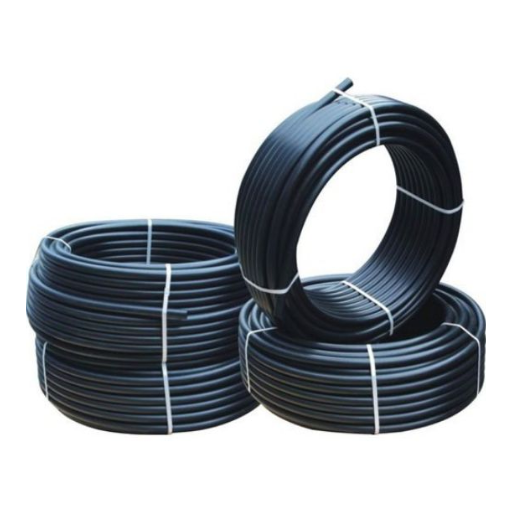
Analyzing HDPE Pipes’ Performance in Different Soil Conditions
Because of their distinct material properties, high-density polyethylene (HDPE) pipes are especially renowned for their adaptability across various soil conditions. The dirt’s compressibility and settlement conditions can be sidestepped by the flexibility, high tensile power, and elongation capacity of HDPE without compromising functionality. This flexibility is crucial when soil characteristics like soil cohesiveness, water content, and compaction level change drastically.
Key studies indicate that, unlike other types of piping materials, HDPE shows less strain under loading conditions, even in non-uniform soil settings. Take, for example, soils with high clay content that are prone to differential settlement. These soils have the potential to cause localized stresses, but due to the ability of HDPE pipelines to redistribute stress, the structural capacity is maintained. The same goes for sandy or granular soil, where dynamic loads can cause deformation of the pipes. The sustained performance of HDPE under high impact resistance proves its worth.
The precise behavior of these pipes under variable soil conditions can be predicted through the integration of advanced analytical models such as soil-structure interaction simulations. These models allow for optimized pipe installations that balance load bearing capacity and environmental factors. With the ongoing refinement of these models, the reliability of HDPE systems aimed to be used under complex geotechnical challenges is enhanced.
Effect of Backfill Material on Pipe Integrity
Backfill materials greatly determine the structural support and useful life of HDPE pipes. The backfill material is in contact with the pipe; hence, it affects the load-bearing and shape-retaining capabilities of the pipe. Well-graded crushed stone or gravel, classified as granular backfill, is often recommended due to its high compaction ability which minimizes voids and evenly distributes loads. This uneven stress relief facilitates smooth transfer of forces which alleviates the development of stubborn pressure that results in deformation or collapse, failure.
On the complete opposite end, loosely compacted or cohesive soils like the clay-rich backfill may display a change in the vertical position of the installed pipe, which is detrimental to the enduring viability of the pipe. Numerous studies confirm that the use of high-quality materials that are subjected to low compression could enhance system reliability while maintaining required limits on deflection. Based on empirical findings, installing compacted granular materials offers the advantage of reducing pipe deflection by roughly 30% above the threshold of poorly graded materials set under the same loading benchmarks.
Moreover, new technologies like geotextile reinforcements within the backfill geosynthetics continue to show potential in stabilization of surrounding soil and improving loads resistance capabilities. Civil engineers assess the soil’s structure, gradation, and compaction requirements when designing backfill materials to ensure compliance with the design criteria and avoid any possibilities of failure in the future.
Real-world Applications and Depth Challenges
The backfilling techniques of a particular project will always relate to practical civil engineering work such as road construction, retaining walls, and large infrastructure foundations. For example, during the construction of highways, the region’s backfill is of great importance because it will affect the overall pavement structure, especially in high-traffic areas. The same goes for engineered backfilling; perhaps, one of its main functions is in the retaining wall systems, and poor selection of materials or wrong compaction techniques can cause displacement or failure of the wall due to lateral earth pressure.
Backfilling methods may pose depth difficulties when dealing with variable subsoil conditions, irregularly shaped excavated profiles, or the unexpected presence of groundwater. An example is fine-grained plastic soils that may keep too much water, which can lead to a reduction in compaction and turn, requiring drainage and, in some cases, chemical stabilizers to avoid swelling and settlement build-up in the long term. Moreover, in recent years, the use of geotechnical monitoring tools like settlement plates and inclinometer designs has gained attention with the aim of risk mitigation associated with pore pressure imbalance and its consequences on differential load intensity and long-term structural deformations.
Solving these problems generally involves incorporating soil structure investigation, foresight analytics, and the newest developments in engineering technologies. Persistent innovation like bio-treated soils and sensor fitted geo smart fabrics promise new horizons for making performance improvements while reducing ecological footprint. These modern techniques can transform systems for more engineering compliant, sustainable standards.
References
Frequently Asked Questions (FAQs)
Q: What are the minimum and maximum cover heights for HDPE pipes?
A: The minimum and maximum cover heights for HDPE pipes vary based on several factors, including pipe diameter, soil conditions, and load requirements. Generally, cover heights for HDPE pipes per industry standards like AASHTO or ASTM need to be adhered to, ensuring proper installation and performance.
Q: How does drainage impact the cover heights for corrugated HDPE pipes?
A: Drainage plays a significant role in determining the cover heights for corrugated HDPE pipes. Proper drainage ensures that the soil around the pipe remains stable, preventing potential issues like erosion or sediment buildup, which could affect the structural integrity of the installation.
Q: Why is at least 12 inches of cover recommended for HDPE pipes?
A: At least 12 inches of cover is recommended for HDPE pipes to protect them from surface loads and environmental factors. This minimum cover helps prevent damage from vehicular traffic and ensures adequate soil support for the pipe.
Q: What are the typical backfill materials used with HDPE pipes?
A: Backfill materials for HDPE pipes typically include Class II material compacted to 90% Standard Proctor Density. This ensures proper support and load distribution, maintaining the integrity of the pipe over time.
Q: How does the N-12 designation relate to HDPE pipes?
A: N-12 is a designation for a specific type of corrugated HDPE pipe known for its durability and performance under various conditions. These pipes are often used in drainage applications and are designed to meet specific standards for strength and reliability.
Q: What role does Standard Proctor Density play in HDPE pipe installations?
A: Standard Proctor Density is crucial in determining the compaction level of backfill material around HDPE pipes. Compacting to 90% Standard Proctor Density ensures that the soil provides adequate support and load distribution, minimizing the risk of pipe deformation or failure.




